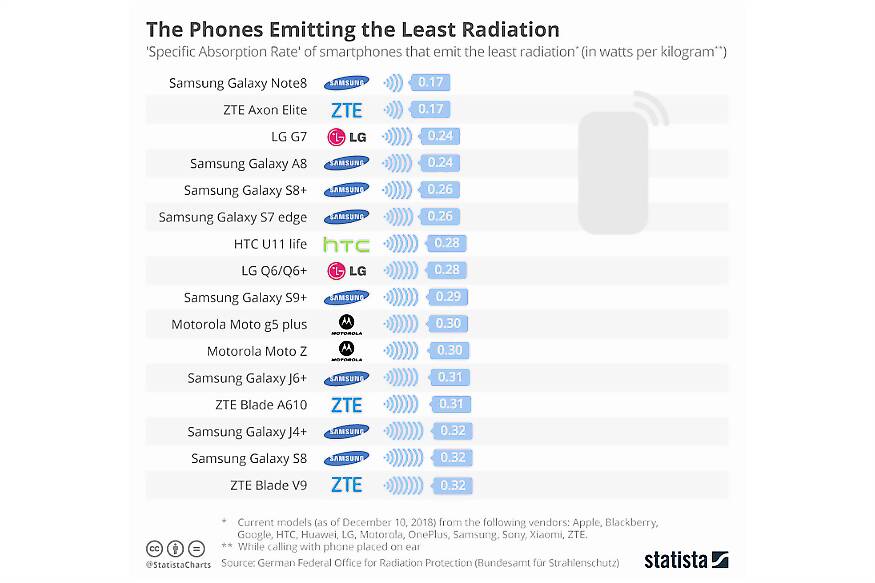
views
The controversy about smartphone radiation continues to rage on. The latest report released by Bundesamt für Strahlenschutz, which is The German Federal Office for Radiation Protection, has revealed the amount of radiation emitted by smartphones currently on sale around the world. The data is calculated in “watts per kilogram”, and lower scores mean lower radiation emission from the smartphone. The report is bad news for Xiaomi and OnePlus, as four of their phones make up the top 5 phones that emit the maximum radiation, as per the report.
The Xiaomi Mi A1 is the worst offender as per the numbers, clocking 1.75 watts per kilogram of radiation, followed by the OnePlus 5T (1.68), the Xiaomi Mi Max 3 (1.58) and the OnePlus 6T (1.55).
The Google Pixel 3XL did not fare much better, registering 1.39 watts per kilogram of radiation, while the OnePlus 6 logged 1.33 on the radiation charts and the Xiaomi Redmi Note 5 logged 1.29 watts per kilogram of radiation.
As far as the Apple iPhones are concerned, the worst offender is the iPhone 7 (1.38 watts per kilogram of radiation) while the newer iPhones, the iPhone XR (0.99), iPhone XS (0.99), iPhone XS Max (0.99) and the iPhone X (0.92) fare much better.
Samsung phones are doing very well in the radiation charts, with the Galaxy Note 8 logging the lowest scores of all—0.17 watts per kilogram of radiation. The Samsung Galaxy A8 (0.24), Samsung Galaxy S8+ (0.26) and the Samsung Galaxy S9+ (0.29) are among the phones that emit the least radiation.

The LG G7 ThinQ (0.24 watts per kilogram of radiation), the HTC U11 Life (0.28) and the Motorola Moto Z (0.30) have also done well in terms of limiting radiation emissions during device usage.
The Huawei Mate 20 Pro, one of the best camera phones in the market right now hits the charts with 0.4 watts per kilogram of radiation rating. At the same time, the Honor 8 Pro registers 1.28 watts per kilogram of radiation. The Nokia 8 Sirocco logs just 0.59 watts per kilogram of radiation.
The German Federal Office for Radiation Protection however has not tested phones made by Chinese phone companies Oppo and Vivo.
It is important to note that while there really isn’t a specific baseline beyond which phones are considered dangerous, the German environmental agency Blue Angel certifies smartphones with a watt per kilogram reading of 0.60 and lower—which means a lot of the offenders in this latest list are more than twice the acceptable reading standards. While there continues to be a debate about the ill-effects of radiation from smartphones, if any, reports over the years have suggested that prolonged exposure to radiation from smartphones tend to be the reason for the blood-brain barrier condition, head tumors and also impact male fertility, among others.




















Comments
0 comment